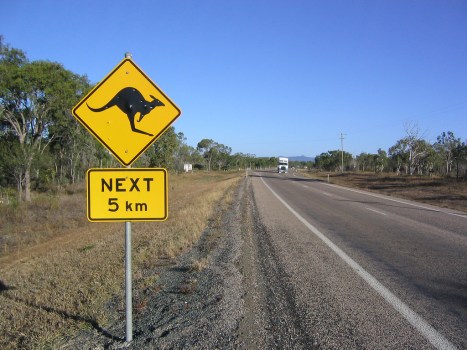By Julian Bajkowski
Australia’s peak rail group has hit out at the Coalition’s promise of $6.7 billion in funding to fix the Bruce Highway in Queenslad, labelling the promise a short-sighted quick fix that squibs real commitment by the government to rolling out integrated transport infrastructure.
Australian Rail Association chief executive Bryan Nye has hit out at the big ticket spend on bitumen as an “old-fashioned approach to infrastructure funding,” claiming that it will “stifle productivity and efficiency in the transport sector and ultimately disadvantage the Australian people.”
The broadside from the rail infrastructure lobby comes as the Opposition leader attempts to spell out a vision for Australia that goes beyond attacking the Labor government’s performance.
Roads funding in the states, especially from Canberra, has become a staple of election campaigns as competing parties attempt to pick-up votes in electorally important areas.
However the tactic of holding infrastructure auctions where competitors often seek to outbid each other on roads spending commitments – has been widely criticized as poor public policy because it fails to deal with different parts of transport infrastructure as a whole.
“Australia as a nation is facing increasingly serious economic, social and environmental problems with traffic congestion clogging our roads, transport emissions choking our urban environment, fuel prices spiking and the continued growth of our major cities,” Mr Nye said.
“The Coalition government’s continued band-aid approach of throwing money at building, expanding and duplicating roads will not address any of the national issues are affecting all Australians.
The ARA is understandably keen to progress rail upgrades as opposed to road upgrades as a priority and argues that ignoring rail as a crucial component in the mix of transport options acts to the detriment of Australia’s economy.
“How can our supply chain operate effectively when only one link is being utilised? Choosing to only invest in roads will see more cars and trucks on our roads and is not the long term solution Australia needs,” said Mr Nye.
While the funding of rail projects may be out of favour with the federal Coalition, the same cannot be said for state Liberal governments. Both New South Wales and Western Australia have committed to significant rail upgrades as they seek to more efficiently deal with population pressures on roads.
In NSW the O’Farrell government has left many of its traditional critics stunned by embracing the reactivation of light rail in inner regions of Sydney as a way to clear the present bottleneck of busses attempting to enter the city during peak hour.
The previous Labor government in NSW eschewed the light rail option as a boutique and novelty infrastructure, a move that proved so unpopular it reversed its position on the eve of the election. Since then, the Coalition state government has vastly expanded on initially modest extensions to the existing Sydney tramway after striking a landmark deal with the City of Sydney.
Meanwhile, the ARA has intensified its criticism of and pressure on Mr Abbott to make a bigger commitment to rail.
“Tony Abbott has blocked funding for major rail projects in Victoria, Western Australia, New South Wales and Queensland – Australia’s most congested states – because the Coalition government has “no history of funding urban rail projects,” Mr Nye said.
The ARA has also hit out at the favouring of roads in federal funding promises while “leaving public transport solely to the states.”
Mr Nye said the was “simply no way to coordinate, prioritise and build the public transport our cities need without involvement at a federal level.”
“By committing this money to the upgrade of the Bruce Highway, Mr Abbott is turning his back on other Queensland infrastructure projects like the Brisbane Cross River Rail, a project endorsed by Infrastructure Australia in its National Infrastructure Plan and set to increase public transport capacity by around 30 per cent to inner Brisbane, that’s nearly 120,000 people,” he said.
Comment below to have your say on this story.
If you have a news story or tip-off, get in touch at editorial@governmentnews.com.au.
Sign up to the Government News newsletter

